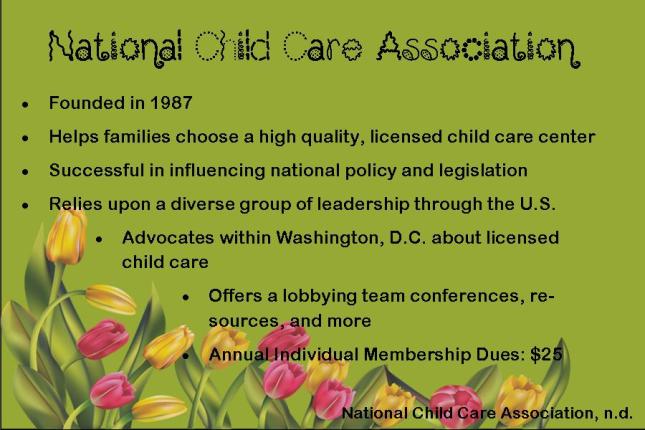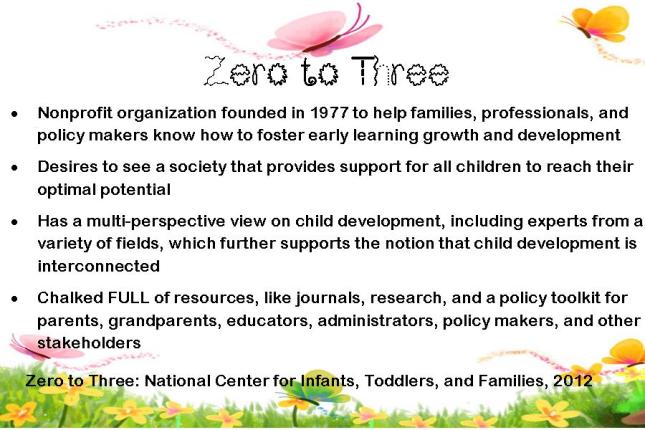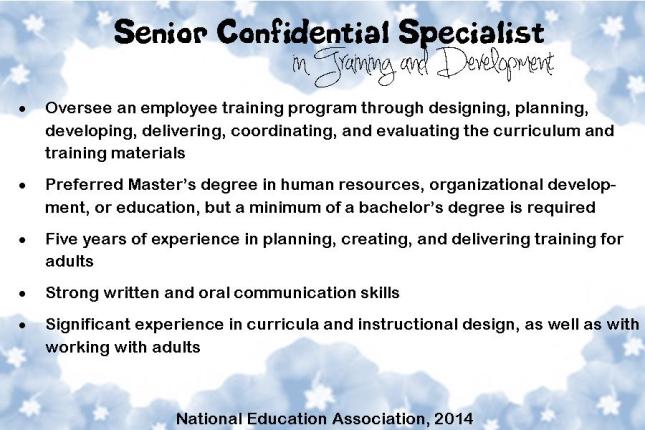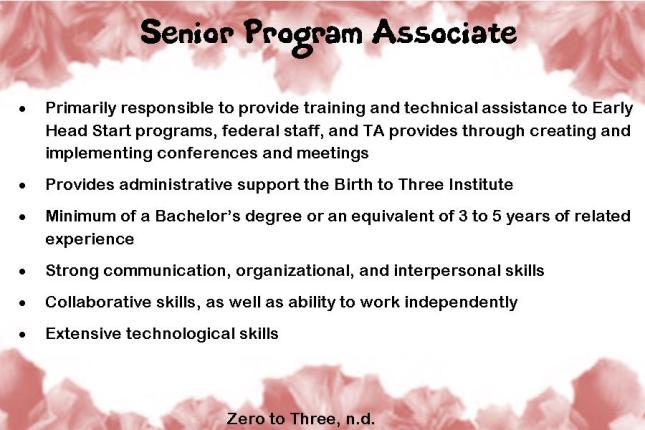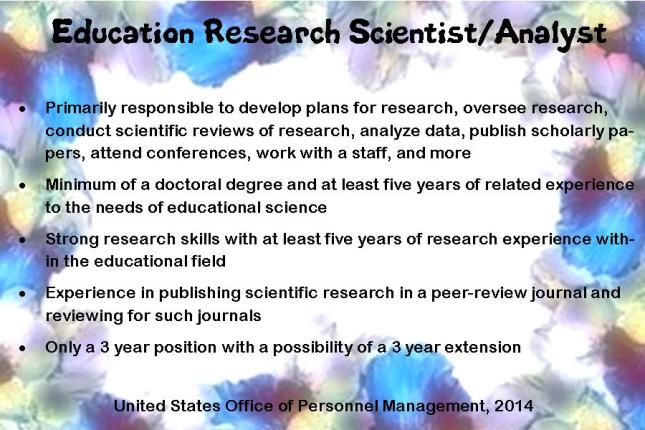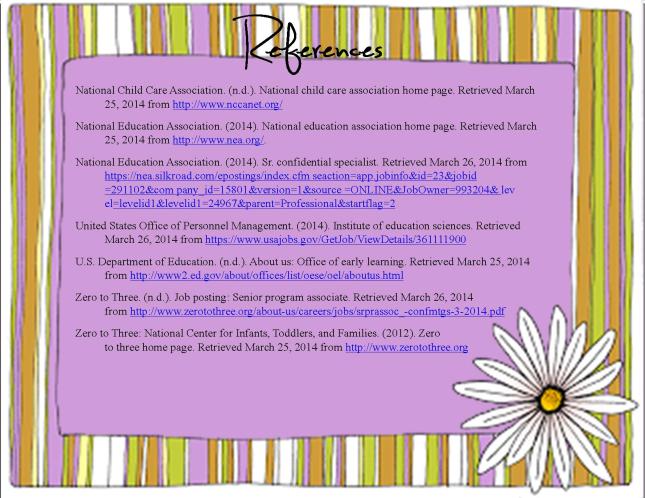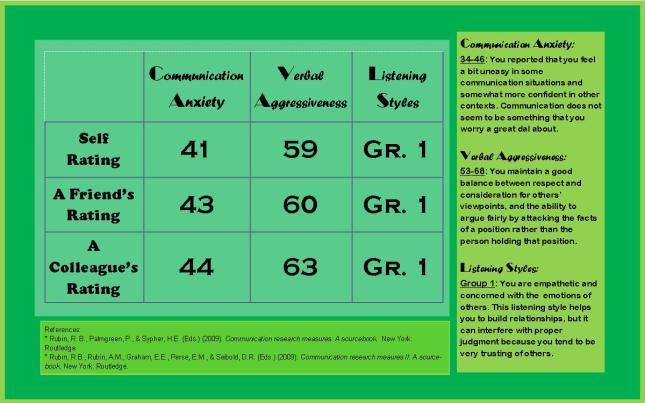When I first started to read about this assignment, I was so excited to finally start mentioning some of my favorite early childhood organizations. So, I began the research days ago. I started with NAEYC, as I just know that this organization would be such a hot topic. It wasn’t until I got into the middle of researching the Council for Exceptional Children that I realized these organizations were national international organizations! (Stay tuned though for my next post highlighting these international organizations!) I had to start all over again, refining my focus on just those organizations or agencies that spanned across the Unites States. I’m so glad that I had this challenge of narrowing my focus, because I found some amazing organizations and agencies that operate here within the United States. While there were certainly a lot to pick and choose from, I narrowed it down to twelve, err, no six, nope … how about four? Continue to read on about these four fabulous early childhood national or federal organizations that appeal specifically to me and my professional passion.
National Child Care Association
I absolutely love the idea behind this organization, as it strives to help families identify a licensed, high-quality early learning program or child care center. This is such an important factor for the learning and development of young children – high quality! When these kiddos are exposed to such a high level of quality, they will truly be able to capture their ideal learning and growth potential! I was also impressed that this organization has been successful influencing “the private sector at state and national policy and legislative tables” (National Child Care Association, n.d.). It also offers a lobbying team, conferences, resources, articles, and so much more! This is definitely an organization that has captured my interest as their passion for high quality child care or early learning is so contagious! I’d love to become involve in the lobbying aspects, as I believe that more federal legislation needs to be considered for optimal learning and growth for young children. The annual membership dues for an individual is a steal for $25 (National Child Care Association, n.d.)! If this interested you, feel free to explore their website in depth at http://www.nccanet.org.
National Education Association
Ok, so this organization might seem a bit out of the ordinary. You may be asking yourself, wait … public education?!?! Does she know that we are actually studying early childhood education? Don’t get me wrong – we are definitely focusing on the little ones, however I really was interested in this association, as it strives to raise awareness about the importance of public education (which actually can include preschool). I liked their stance that public education is both a human right and a civil right – really, it’s an equal opportunity for all children. This supports my deep professional passion for including all children, regardless of ability, to receive a free and appropriate education. This association’s website is also stocked full of such amazing resources, like lesson plans, teaching strategies, advice, funding opportunities, and upcoming events. The individual membership dues run about $24 (National Education Association, 2014). Considering this organization? Find more informaiton at http://www.nea.org.
Zero to Three
This nonprofit organization began in 1977 and is by far one of my favorite national organizations for early childhood education. Not only are there excellent resources, but this entire organization really embraces a collaborative effort by reaching out to families, parents, professionals, and even policy makers. Remember Bronfenbenner’s ecological theory? I feel that this organization spans across each of these levels, helping to make an even bigger impact on the learning and development of children. In addition, they also look at early childhood from so many different perspectives – social, physical, emotional, relational, and linguistically – to foster the awareness that a child’s development is truly interrelated. The website is chalked full of resources for a variety of audiences, including journal articles, research and even a public policy kit. I urge you to check out this organization, as they might have excellent resources for your issue/challenge (Zero to Three: National center for Infants, Toddlers, and Families, 2012). See http://www.zerotothree.org for more information.
Office of Early Learning
Lastly, but certainly not least, I decided to explore the realm of federal agencies to see if there was any support for early learning and development. This committee or agency (I’m not really sure which type of group it is considered) actually works to support the United States Department of Education’s Early Learning Initiative to help improve the overall development of the learning and development of children. This federal committee really intrigued me, as they oversee different grants, like the Race to the Top. I am definitely interested in learning more about this federal organization (committee?) to help support different grant opportunities for early childhood education (U.S. Department of Education, n.d.). Are you interested too? If so, check out www2.ed.gov/about/offices/list/oese/oel/aboutus.html
Federal or National Job Opportunities
Of course no research would be complete without looking up different job opportunities! In my last post, I explored various local and state possibilities, so I wondered is there anything out there remotely within my reach on a nationally level. With a bit of digging, I managed to find three different opportunities that actually interested me. Some are definitely within my reach, while others may need a bit more experience or education. Without any further adue, the three job opportunities are:
This job opportunity resides within Washington D.C., so if I ever wanted to relocated from my home state of Pennsylvania, this might be the place I end up at! (How far do you think that commute would be every day?!?!) Anyway, before I get side tracked, a Senior Confidential Specialist (in Training and Development) primarily works with training adults. Basically, I would design, create, develop, deliver, coordinate, and evaluate an employee training program. Now, don’t get me wrong – working with children is such a joy, however I am definitely up to the challenge of working with adults. Besides, I absolutely love to design and create things, so this may just be up my alley. The job requirements calls for a minimum of a bachelor’s degree (check mark!), but a Master’s degree in preferred (coming up!). In addition, I need at least five years of experience working in creating, developing, and delivering training for adults. (Uh oh! This is definitely an area that I need to focus on and build up, as my years in this experience fall into a big fat zero!) However, I do have the strong communication and problem-solving skills, but I do think I need to gain more experience in curriculum and instruction design, as well as more knowledge about it too! Looks like I am well on my way for this job, but I still have some ways to go (National Education Association, 2014).
Ok, so maybe the above job didn’t quite fit my skills and expertise at this moment in the game, but how about a Senior Program Associate? This job really held my interest, as it involves a lot of technical support to the Birth to Three Institute. (Remember how much I adore the Zero to Three organization? It just so happens that this job is related to it!) So, basically, I would be providing a lot of technical assistance and training to different organizations and agencies, like Early Head Start, in regards to designated meetings and conferences. I would also provide administrative support, which just so happens to be something I am an expert at! Looking at the job requirements, I definitely have the minimum of a bachelor’s degree, as well as the collaborate and creative skills needed. In addition, I am a technological savvy (another skill needed), however I should be refined and enhance my technology knowledge and expertise. Otherwise, I fit right into this job (Zero to Three, n.d.).
Well, as long as we are shooting for a long-term job opportunity, we might as well add a Education Research Scientist/Analyst to the bucket list. I do desire to become an educator, not really a scientist; however exploring and diving into research articles definitely captures my interest. I love to see how methods are completed, as well as the results with the follow-up recommendations or discussions. Therefore, becoming an education research scientist doesn’t sound terrible, but rather exciting. I’d love to become part of a research team that helps to shape the future world of early learning! Although this job sounds great (with excellent pay and benefits, might I mention), there are a lot of requirements that I don’t quite fit into yet. The biggest one? A doctoral degree. I am going for a doctorate Master’s degree however, so I am a step closer – but I do need to gain more education before even considering this job. In addition, I need to have at least five years of experience related to educational science (how does one go about getting that anyhow?), as well as at least five years of research experience (United States Office of Personnel Management, 2014). Looks like I’ve got my work cut out for this job, but it sure is a nice goal to reach towards!
So, that is just touching the surface of the national or federal agencies/organizations that support early childhood education, as well as a few job opportunities on the national level. Stay tuned for my next post, which will explore international organizations (and maybe a few job opportunities too!).
Until then, your colleague-in-crime, Erin
